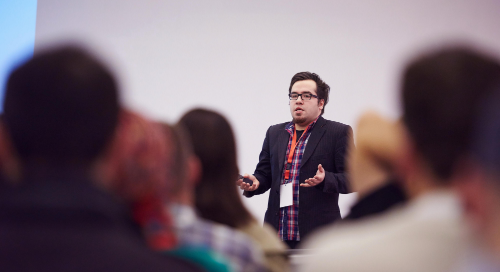actions-and-insights-for-societies-from-our-membership-survey
March 27, 2015
To close our Membership Matters week, Lorna Berrett, Director, Society Marketing at Wiley presents some initial thoughts from society executives on how they might apply the results to their organizations.
A couple of weeks ago we invited our Society Advisory Board (SAB) members to a preview of the Wiley Membership Survey results. We were especially interested in the SAB members’ feedback, since we want the results to be used by societies to supplement their own research, provide a better understanding of members, and help them make better-informed decisions about their membership offerings
Unlike other membership surveys, ours didn’t focus on any one specific discipline or community, nor did it only include members. As Diane Cushman, Executive Director, National Council of Family Relations noted, “We survey our new members, current members and past members, but we don’t survey our “never been members” so that data was very interesting. “
One result that we all found interesting and surprising was that 15% of non-member respondents haven’t joined a society because they haven’t been invited, 12% said that “it never occurred to them to join”, and 9% “never had a reason to join”. In addition, some of the written responses stated they felt they were not qualified to be a member, for example, because they were still students. Some of our Society Advisory Board members are already taking a more active approach to inviting new members to join their association. Helena Djurkovic of the Political Studies Association (PSA) is running a recruitment drive with a personal letter from the PSA Chair and Jonathan Bruun of the British Pharmacological Society (BPS) has run a similar program, with invitations from senior members of the BPS Board to key institutions in their discipline. Sarah Sladek, author of “Knowing Y: Engage the Next Generation Now” claims Millennials are loyal to people rather than institutions, so a personal invitation may resonate more with this group. We will be segmenting our results further in the future to see if our survey bears that out.
Access to the society journal and opportunities for continuing education (CE) and training were the top two member benefits for members and non-members alike, with the journal ranking top for members, while CE was the most valued benefit for non-members. However peer mentoring ranked low on the list for both groups and only 16% of members have participated in a peer mentoring program. This contrasts with the broader category of “expert advice,” which was ranked the fourth most valued benefit for non-members. So, ways to transfer expertise from a society to the community – beyond the reach of publications and conferences – may be worth investigating.
Ed Liebow, Executive Director, American Anthropological Association summed up the response of many SAB members, when he noted that: “I was struck by a number of actionable findings, including the surprising number of non-members who say they haven't joined because they weren't asked (or not asked properly), the reasons for joining (and not joining), and the most valued benefits.”
Cynthia Vlasich, Director, Global Initiatives at The Honor Society of Nursing, Sigma Theta Tau International, noted how the research can add to work they have already done: “We have just conducted a member survey and it was intriguing to see where our results ran parallel to these, and also where they diverged. I believe this information would be very helpful to share with both our membership and marketing staff and also with our staff who are engaged with events and program planning.”
Generally respondents are highly engaged with their society, with 72% actively reading the society’s publications, 58% attending the annual meeting, and 46% visiting the members-only section of the website. Many of the SAB members already have strategies in place for recruiting students and early career members, but they report encountering lapses in membership at key transition points – such as moving from research to a non-academic career. This is reflected in the survey results, which show that membership of a society peaks at between 2-4 years, gradually declining from the fifth to twentieth year, before increasing again when members reach the 20+ year mark. It is a common engagement challenge, and it will be interesting to see if different benefits are valued by those working in industry and professional practice versus those in research roles.
We were pleased with the level of discussion this session generated and to find many of the results striking a chord with our SAB members. Diane Cushman summed up her response as follows: “I went directly from the call to the office of my director of membership and marketing. Your survey was inspiring. I am encouraged by Wiley’s work to support societies and this survey goes a long way to helping me find solutions to our challenges.” We hope you will feel the same way!
There was, as expected, keen interest in delving deeper into the results by region, age range, and discipline which we will be working on over the coming months, so please check back for future posts on this topic. Meanwhile, please use the Comments section below to let us know your reactions to the Membership Survey results, what you find interesting or surprising, and how you plan to use this information in your society or association.
Image Credit/Source:© Franz Pfluegl 2006 - Fotostudio Pfluegl,





